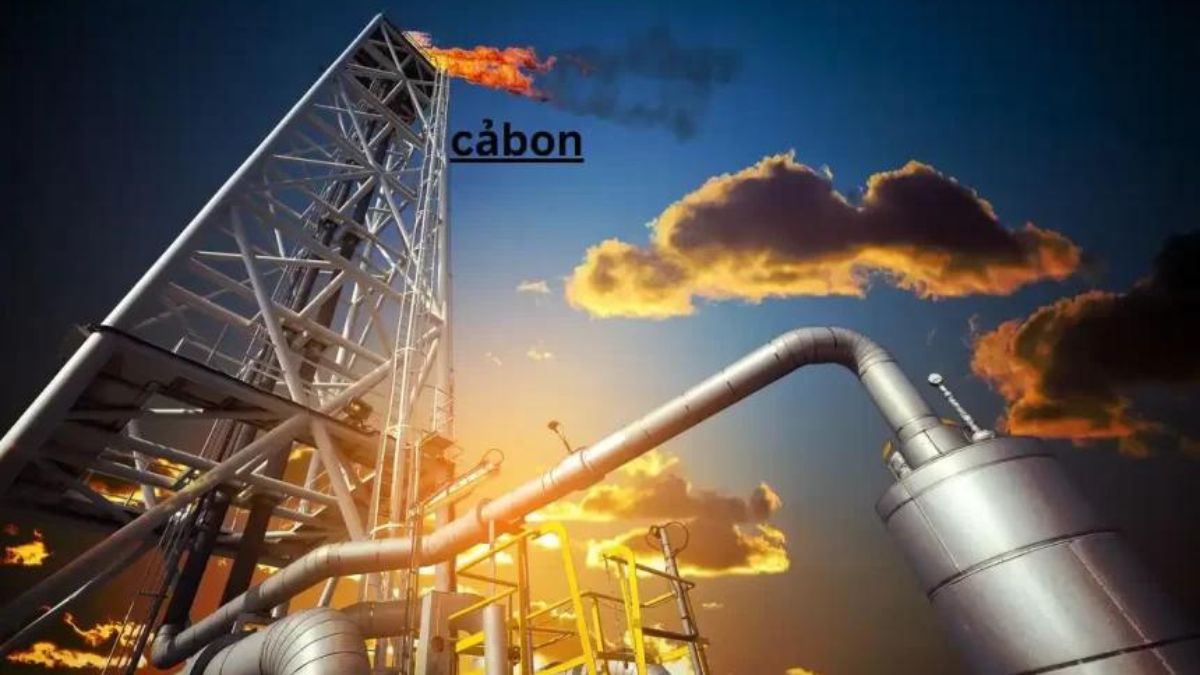TECHNOLOGY
Unraveling the Wonders of Cảbon: A Comprehensive Exploration

Among the constantly changing terrain of scientific understanding, one element—carbon—stands out due to the significant influence it has on many parts of our life. This article provides an overview of cảbon and delves into its many uses, qualities, and relevance in the modern world.
1.Understanding the Basics
What is Cảbon?
Cúbon, an element with the atomic number 6 and the symbol ‘C’, is the foundation of all living things. Investigate it thoroughly to learn its mysteries.
Forms of Cảbon
Discover the many Cảbon shapes, from the lustre of diamonds to the adaptability of graphite. The features and uses of each shape are distinct from one another.
2.Cảbon in Everyday Life
Cảbon in the Human Body
The importance of carbon in human biology must be revealed. The very essence of life depends on carbon, which is present in all organic substances including DNA.
Cảbon in Technology
Discover the world of technology with us as we delve into how carbon helps develop new fuels and materials that drive progress in many sectors.
3.Environmental Impact
Cảbon Footprint
Think about what a “Cảbon footprint” is and how it affects the natural world. Learn several ways that people and businesses may lessen their environmental effect.
Cảbon Capture and Storage
Check out state-of-the-art carbon capture and storage and other climate change solutions. Locate the ways in which these ideas might help reduce environmental problems.
4.Cảbon in Industry
Cảbon in Manufacturing
Discover how carbon plays a part in several industrial processes, such as making steel and innovative materials. Gain an appreciation for its role in influencing contemporary manufacturing.
Innovations in Cảbon-Based Products
Find out about the most recent breakthroughs that integrate Cảbon. Look at the many ways one element has changed everything, from graphene to carbon nanotubes.
5.Challenges and Controversies
Cảbon Emissions and Global Concerns
Handle the problems related to carbon emissions and how they affect the world’s climate. Join the discussion about the efficacy of environmental policy, which is hotly contested.
Ethical Considerations in Cảbon Industries
Define Carbon industries and investigate the moral challenges they provide. Take a look at how technical progress and environmental consciousness coexist.
6.Future Prospects
Cảbon in Sustainable Practices
You should look into how Carbon is starting to spur eco-friendly habits. Research new ideas and projects that are working to make the future a greener place.
Emerging Technologies
Delve into the next technologies connected to carbon. New developments in renewable energy and carbon capture are only two examples of the many exciting possibilities.
7.Conclusion
Cảbon, to sum up, is an element with many uses that go beyond its basic characteristics. Its far-reaching and ever-expanding effects on society, the natural world, and business are staggering. A sustainable and inventive future is within our reach, and CẎbon will be an integral part of it as we face obstacles and seize possibilities.
8.FAQs
1.How does Carbon contribute to climate change?
The release of greenhouse gasses via burning activities, which includes the combustion of fossil fuels, is the primary process whereby carbon is contributing to the phenomenon of global warming.
2.Can Carbon capture and storage truly make a difference in reducing greenhouse gas emissions?
When implemented on an extensive basis, the storage and capture of carbon may definitely decrease emission of carbon dioxide from the atmosphere.
3.What are some everyday products that contain Carbon?
Plastics, textiles, and even food items are common everyday foods that contain carbon, demonstrating how pervasive the element is.
4.How can individuals reduce their Carbon footprint?
People may lessen their impact on the environment by embracing sustainable practices including switching to renewable energy, cutting down on trash, and selecting environmentally friendly goods.
5.Are there any breakthrough technologies usingCarbon that we can expect in the near future?
Carbon nanotubes and other innovative carbon-based materials hold a lot of potential for a wide range of uses, from electronics to healthcare, according to question five.
TECHNOLOGY
Facebook Login Page: A Gateway to Social Connectivity

As a global platform for communication, Facebook has permeated every aspect of our lives. The Facebook login page is the gateway to this enormous social network, providing users with safe and tailored access.
User Interface and Design
Facebook has taken steps to sure that its password page is easy to use for consumers of any age or degree of technical proficiency. Whether you’ve been an old hand or only starting, committing to it is a snap thanks to the sleek layout and straightforward interface.
Security Measures
One of Facebook’s main concerns is the safety of user accounts. For an additional degree of security, the login page uses strong methods like Two-Factor Authentication. The best way to keep the internet safe is for people to be alert and report any strange behavior they encounter.
Troubleshooting Login Issues
It is frustrating when you find yourself locked out of your online account or forget your username and password. Immediately restore access to your Facebook profile with the use of the site’s straightforward options such as recovery of passwords and account retrieval techniques.
Mobile Accessibility
Facebook has taken steps to ensure that its account login screen is easy to use on smartphones and tablets as a reaction to the widespread use of these sorts of gadgets. Nowadays more than ever, consumers can stay connected no matter where they might be by simply logging in while on their mobile devices.
Integrations and Permissions
It is standard practice to grant access to applications developed by other parties. The login page gives users command over their data by letting them manage permissions and restrict profile access to trusted applications.
Privacy Settings
Facebook recognizes the significance of protecting user privacy. From the login screen, users may adjust their privacy settings to choose which information is shown to others and which is kept private.
Multi-Device Synchronization
The capacity of the Facebook login page to synchronize flawlessly across various devices is its greatest asset. Your Facebook experience is the same regardless of the device you use to check-in.
Updates and Changes
Over time, Facebook’s login page changes. If you’re hoping to get the absolute most out of your profiles on social media, you should be knowledgeable of every one of the most recent modifications, news stories, and inclusions.
Tips and Tricks
Here are a couple of saving time tricks and tips to help you make the most out of the official Facebook login page, irrespective of the browser you’re running. You may improve your user experience overall by implementing these simple hacks.
Future Enhancements
Exciting features are about to be revealed. To further enhance the login page’s usability, Facebook diligently considers user comments and makes adjustments accordingly.
Conclusion
Logging onto Facebook is more than simply accessing your social network; it opens a whole new realm of interaction and connection. It keeps your social experience safe and seamless with regular upgrades, an improved security system, and an intuitive design.
FAQs
Is it safe to use the Facebook login page on public computers?
Logging out of shared devices and being vigilant of potential security threats is typically a good idea, even if it is usually secure.
How can I recover my password if I forget it?
To successfully reset the username and password, go to the password page, look for the ” Forgotten Password” link, and subsequently follow the directions displayed.
Can I customize who sees my posts directly from the login page?
Indeed, the login page itself has the option to change your privacy settings, allowing you to restrict the visibility of your postings.
What should I do if I notice suspicious activity on my account from the login page?
To protect your account, please notify us of any unusual behavior as soon as possible using the methods specified on the login page.
Are there any upcoming features on the Facebook login page?
Keep checking back for more information; Facebook is always trying to make the login page better.
NEWS
The Obama AI Voice: Redefining the Soundscape

Among the many advancements brought about by the digital age, the creation of the Obama AI Voice stands out. This ground-breaking innovation revives Barack Obama’s unique voice using artificial intelligence. This article delves further into this intriguing development, discussing its background, uses, difficulties, and prospects.
1. Development of Obama AI Voice
Thanks to recent tech developments, very lifelike artificial intelligence voices are now within reach. Complex calculations and teamwork among computer scientists, language specialists, and voice actors went into creating the Obama AI Voice.
2. How Obama AI Voice Works
Gaining insight into the intricate realm of speech synthesis is necessary to comprehend how the Obama AI speech functions within. A very realistic digital recreation of President Obama’s speech is created by artificial intelligence algorithms that painstakingly study and reproduce his distinctive rhythm, tone, and subtleties.
3. Applications of Obama AI Voice
Many different things can be done using the Obama AI Voice. This technology is causing a stir in many other fields, thanks to its use in the entertainment business, political campaigns, and the improvement of accessibility for the visually impaired.
4. Challenges and Controversies
On the other hand, problems and debates are inevitable outcomes of innovation. Questions of privacy and responsible usage are raised by ethical concerns over the possible misuse of the Obama AI Voice. The ethical creation and implementation of AI speech technology depends on overcoming these obstacles.
5. Future Trends
As we look ahead, we can see that AI voice technology has amazing potential. Many people are interested in the Obama AI speech because of the possible social implications of future advances in speech synthesis algorithms.
6. Comparisons with Other AI Voices
When compared to other AI voices, the Obama AI Voice’s strengths and faults become apparent. The success and widespread use of these technologies are heavily dependent on user choices.
7. Public Reception
One way to get a feel for how people feel about AI is to look at how the Obama AI Voice was received. Its public perception is shaped in part by fads on social media and celebrity endorsements.
8. Legal and Copyright Implications
Creating and using the Obama AI Voice raises copyright and legal concerns, as does the creation of any new technology. Developers require a strong legal framework because of intellectual property difficulties and other legal challenges.
9. Obama AI Voice in the Media
The Obama AI Voice has become an even bigger cultural phenomenon thanks to its appearances in films, television programs, and endorsements from famous people. The use of it in popular culture demonstrates how versatile and well-accepted it is.
10. Accessibility and Inclusivity
By removing language obstacles and improving communication for marginalized groups, the Obama AI Voice expands beyond the realms of politics and entertainment. One remarkable feature of this technological wonder is the possible influence it might have on inclusion.
11. Educational and Training Uses
A new subfield is developing around the Obama AI Voice’s use in instructional and training contexts. Its adaptability is utilized to the advantage of learners all across the globe, from language learning apps to training artificial intelligence models for educational reasons.
12. Impact on Public Speaking
Many are questioning the sincerity of Obama’s public speeches and events that use the Obama AI Voice. How does the general audience see AI-delivered speeches? The dynamic nature of public speaking can be better understood by delving into this facet.
13. User Interactivity
A new level of involvement is introduced by the Obama AI Voice through its connection with virtual assistants and user personalization choices. Because users may personalize their experience, the boundaries between AI and humans are becoming increasingly porous.
14. Conclusion
Last but not least, the Obama AI Voice is a major step forward for AI technology. The necessity for ethical concerns and responsible growth is highlighted by its numerous uses, which also bring forth obstacles and debates. Public opinion, legislative frameworks, and social inclusion will all be influenced by how we handle AI voices as we move forward.
15. FAQs
1. Is the Obama AI Voice publicly available for use?
Although there are demos and restricted access, there may be ethical and privacy issues with public availability.
2. How do developers ensure the responsible use of the Obama AI Voice?
Ethical standards, user agreements, and constant monitoring are all tools developers use to prevent abuse.
3. What are the potential educational benefits of the Obama AI Voice?
Technology may be a great asset in the classroom for a variety of courses and can help students learn new languages.
4. How does the public perceive speeches delivered by AI voices?
Opinions of the public are divided; some welcome the technological advancements, while others voice doubts about their veracity.
5. What legal challenges do developers face in creating AI voices like Obama’s?
Developers face a difficult legal landscape when it comes to intellectual property issues and copyright concerns.
TECHNOLOGY
Xtpaes: Revolutionizing Digital Landscapes

Being ahead of the curve is essential in the ever-changing realm of digital marketing. Then along came Xtpaes, a revolutionary piece of software that has been revolutionizing how companies deal with audience interaction and exposure on the web.
1. Understanding Xtpaes Technology
The abbreviation Xtpaes stands for X-treme Page Optimization System and represents a revolutionary shift in the digital world. This technique is all about making web pages as optimized as possible, so they function like clockwork and get maximum exposure. Gaining a deep grasp of Xtpaes is crucial for any marketer or aspiring entrepreneur looking to maximize its potential.
2. The Evolution of Xtpaes in Digital Marketing
It is necessary to follow the evolution of Xtpaes to understand its relevance. Over the years, Xtpaes has grown tremendously, going from a little startup to a dominant player in the digital marketing space. Let’s examine the events that have molded this groundbreaking technology by delving into the historical history.
3. Benefits of Xtpaes for Businesses
What are the benefits of Xtpaes for businesses? Because of all the different ways it helps, that’s where the solution rests. The benefits, which range from increased user engagement to better search engine rankings, are real and not only theoretical. What makes Xtpaes an indispensable tool for digital marketers? Let’s have a look.
4. Implementing Xtpaes Strategies
The benefits have been identified, and the next step is to put them into action. Xtpaes methods include both on-page and off-page SEO practices. Building an engaging and effective online presence is the goal of these tactics, not only making little adjustments to the code. Here we will go into some practical methods to include Xtpaes and take your digital game to the next level.
5. Xtpaes and Content Creation
Xtpaes acknowledges the supremacy of content. In what ways does Xtpaes aid in the production of media? Here we take a look at how Xtpaes and engaging content work hand in hand. Discover the secret to creating captivating stories that complement Xtpaes techniques to the letter for optimum effect.
6. Challenges and Solutions in Xtpaes
Problems arise with every new technical development. The same holds for Xtpaes. This section will help you confidently traverse the Xtpaes environment by debunking common myths and providing real answers. Overcoming obstacles is the key to reaching your goals.
7. Case Studies: Successful Xtpaes Implementations
What matters more than words are deeds. The revolutionary potential of Xtpaes is demonstrated by real-life instances. Read up on real-life examples of how companies have used Xtpaes to boost their visibility online, increase website traffic, and accomplish amazing results.
8. Future Trends in Xtpaes
Keeping up with the ever-changing digital landscape requires a keen eye for what’s to come. Where does Xtpaes go from here? Delve into the latest projections and new technologies that will influence the future of Xtpaes.
9. Xtpaes vs Traditional SEO
There will inevitably be comparisons between Xtpaes and traditional SEO. How does Xtpaes compare to more conventional methods of search engine optimization? To assist you decide whether to use each method, this section compares and contrasts their advantages and disadvantages.
10. Tools and Resources for Xtpaes Optimization
To succeed in Xtpaes, you need the proper equipment. This section offers a thorough overview of the software and internet resources that are necessary for optimizing Xtpaes effectively.
11. Measuring Xtpaes Success
In the vast digital landscape, key performance indicators serve as a reliable guide. Find out what key performance indicators (KPIs) are important for evaluating the efficacy of your Xtpaes tactics. By the end of this part, you will know that your endeavors are well-planned and not a wild goose chase.
12. Common Xtpaes Mistakes to Avoid
In the Xtpaes universe, knowing how to avoid typical traps is vital. To guarantee a successful Xtpaes installation, this section identifies common pitfalls and provides practical advice to avoid them.
13. Expert Insights on Xtpaes
What are the opinions of Xtpaes’s industry experts? Professionals who have been through the Xtpaes terrain can provide you with insightful commentary and advice. Their ideas lay out a strategy for thriving in the dynamic world of digital marketing.
14. Conclusion
Finally, Xtpaes is a strategic need, not only a technical wonder. Its influence on digital marketing is immense, providing companies with an advantage in the oversaturated internet market. The most important thing is to put what you learn into practice when you begin your Xtpaes adventure. Take advantage of Xtpaes, create engaging content, and see your online presence soar.
15. FAQs
1. What makes Xtpaes different from traditional SEO?
Xtpaes goes above and beyond what is possible with conventional search engine optimization by concentrating on extreme page optimization.
2. Can Xtpaes be implemented by small businesses?
Sure thing! Because of its scalability and flexibility, Xtpaes can accommodate companies of any size.
3. How quickly can businesses see results with Xtpaes?
While everyone’s experience is unique, several companies report significant gains after just a few weeks of using Xtpaes tactics.
4. Is Xtpaes only for tech-savvy marketers?
Not. Xtpaes is made to be easy to use, so marketers of various abilities can find what they need.
5. Can Xtpaes work alongside other digital marketing strategies?
Of course! For all-encompassing outcomes, Xtpaes can supplement and improve upon different digital marketing techniques.
-

 NEWS6 months ago
NEWS6 months agoDystopian 1993 Novel NYT: Navigating a Dark Literary Landscape
-

 TECHNOLOGY5 months ago
TECHNOLOGY5 months agoFacebook Login Page: A Gateway to Social Connectivity
-

 BUSINESS6 months ago
BUSINESS6 months agoConnect Shopify Forms to HighLevel: Streamlining Your Business Processes
-

 HOME5 months ago
HOME5 months agoCraigslist Tampa: Navigating the Online Marketplace
-

 CELEBRITY8 months ago
CELEBRITY8 months agoMyrtle Gonzalez: A Trailblazer in Early Cinema
-

 HOME5 months ago
HOME5 months agoThe Clear Advantage: Unpacking the Benefits of Clear Backpack
-

 EDUCATION9 months ago
EDUCATION9 months agoHumble Beginners: Navigating the Path to Success
-

 HOME5 months ago
HOME5 months agoSnow Storm: Navigating the Whirlwind
